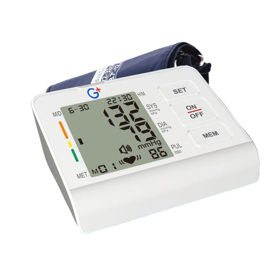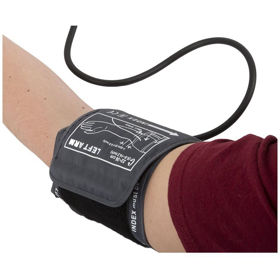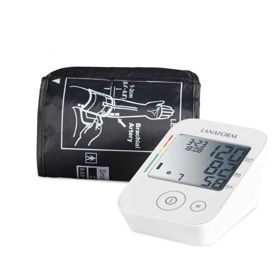Where can I buy a pressure-measuring device?
Pressure measuring devices are usually found in the following branches:
- pharmacies and drugstores
- shops with medical material
- supermarkets
- online shops
- electronics stores
- department stores
You can see our offer at the link below:
https://www.moja-lekarna.com/merilci-tlaka-in-temperature
What is the difference between a sphygmomanometer and a blood pressure monitor?
A sphygmomanometer (pressure gauge) and blood pressure gauge are tools used to measure blood pressure.
Although all sphygmomanometers are blood pressure monitors, not all are sphygmomanometers; if you are considering purchasing a device for personal use, you must consult your doctor or pharmacist for recommendations based on your specific needs.
What should we pay attention to when buying a pressure gauge?
When purchasing a sphygmomanometer, manual, or digital blood pressure monitor, several factors must be considered to ensure accurate readings and ease of use. Remember that correct measurement technique is crucial when measuring blood pressure, so if you are unfamiliar with using a hand-held sphygmomanometer, consider seeking training or advice from your doctor or pharmacist.
Keep the following tips in mind when purchasing:
- Accuracy: Make sure the accuracy and precision of the device has been confirmed. Organizations like the British Hypertension Society (BHS) or the American Heart Association (AHA) offer guidelines or lists of approved devices. Devices with a recognized validation standard are more likely to provide reliable results.
- Type: decide whether you want a traditional or digital manual sphygmomanometer. Digital devices are generally more accessible for personal use, while doctors are trained to use hand-held devices. If you choose a hand-held device, decide between mercury and aneroid. Mercury devices are considered the gold standard for accuracy, but due to environmental concerns, their use is restricted in many places and is now even banned.
- Cuff Size: A poorly fitting cuff can give inaccurate readings. Make sure the device comes with a cuff that fits your arm correctly. Please measure the circumference of your hand to choose the right size.
- Features: Memory functions are handy for tracking readings over time. Some devices also allow multiple users to save their readings separately. Detecting an irregular heartbeat alerts you to heart rhythm abnormalities. A large, clear display can make viewing readings easier, especially for those with vision problems. Also, check if the device is running on batteries, a power adapter, or both.
- Ease of use: some devices are more user-friendly than others, especially for those unfamiliar with medical equipment.
- Brand reputation: opt for reputable brands known for durability and precision.
- Certificates and standards: check whether the device meets the standards set by recognized health organizations or whether it has any certifications.
What is normal and healthy blood pressure?
Blood pressure is usually recorded as two measurements: systolic and diastolic. It is measured in millimeters of mercury (mmHg). Blood pressure categories as defined by the American College of Cardiology and the American Heart Association (last updated in 2021) are:
Normal blood pressure:
- Systolic: Less than 120 mmHg
- Diastolic: Less than 80 mmHg
Promoted:
- Systolic: 120-129 mmHg
- Diastolic: Less than 80 mmHg
Hypertension of the 1st degree:
- Systolic: 130-139 mmHg
- Diastolic: 80-89 mmHg
2nd degree hypertension:
- Systolic: 140 mmHg or more
- Diastolic: 90 mmHg or more
Hypertensive crisis (requires medical attention):
- Systolic: higher than 180 mmHg
- Diastolic: higher than 120 mmHg
Knowing that "normal" can vary from individual to individual is essential. Age, gender, weight, and existing medical conditions can affect an individual's healthy blood pressure. For example, blood pressure can naturally increase with age due to hardening of the arteries. Consult your healthcare provider to explain your blood pressure readings and get personalized advice.
Regular blood pressure checks and monitoring are crucial, especially if you have risk factors for hypertension. Even if your blood pressure is in the "elevated" range, it's critical to take preventative measures to reduce your risk of progressing to hypertension, which can lead to complications such as heart disease, stroke, kidney damage, and more.












 Facebook
Facebook
 Instagram
Instagram
 info@moja-lekarna.com
info@moja-lekarna.com

